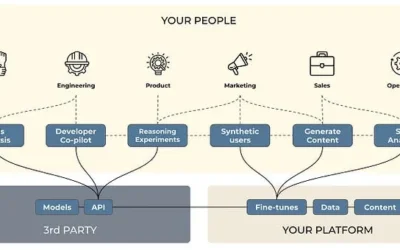SELECTED BLOG POSTS
How CIOs can scale gen AI | McKinsey
The honeymoon phase of generative AI (gen AI) is over. As most organizations are learning, it is relatively easy to build gee-whiz gen AI pilots, but turning them into at-scale capabilities is another story. The difficulty in making that leap goes a long way to explaining why just 11 percent of companies have adopted gen AI at scale, according to our latest tech trends research.1
3 Reasons Why The Promised Gains From A.I. Are Still Faraway
A.I. Hype Is Generating Hundreds Of Billions Of Dollars In Investment. Yet A.I. Is Bad At Math, Hobbled by Inconsistent Data, And Crippled by Siloed Expertise.
AI, we are told, is the future. It will transform every aspect of human life, fully justifying the hundreds of billions of dollars that big business is spending in pursuit of exponential gains in efficiency and productivity. The gold rush is in full swing and every company from Amazon to your local toy store is trying to implement AI in some way.
Yet three interlocking problems stand in the way of achieving major gains from A.I. in the near term.
The quantified organization: Grail or Big Brother?
Thanks to the growing mass of data they capture, businesses are in a position to understand how their employees are doing and how they function, and to imp
Thanks to the growing mass of data they capture, businesses are in a position to understand how their employees are doing and how they function, and to implement a process of continuous improvement on both organizational and human dimensions. But they can’t do this without gaining the trust of their employees.
“You can only manage what you can measure“. Peter Drucker’s phrase may have been criticized, but we have to admit that he hit the nail on the head. Measuring anything and everything, just because it can be measured, has led to excessive complication in organizations, and to obvious managerial and decision-making errors. When a measure becomes an objective, it ceases to be a good measure (Goodhart’s Law).
Cutting-Edge Infrastructure Best Practices for Enterprise AI Data Pipelines
The ability to harness, process, and leverage vast amounts of data sets leading organizations apart in today’s data-driven landscape. To stay ahead,
The ability to harness, process, and leverage vast amounts of data sets leading organizations apart in today’s data-driven landscape. To stay ahead, enterprises must master the complexities of artificial intelligence (AI) data pipelines.
“AI Revolutionizes Transportation: Enhancing Efficiency, Safety, and Sustainability Across the Globe | DC Velocity
AI is transforming transportation by improving efficiency, enhancing safety, and promoting sustainability, reshaping how goods and people move globally.
Artificial Intelligence (AI) is revolutionizing the transportation sector by enhancing efficiency, safety, and user experiences. In transportation, AI applications range from autonomous vehicles and predictive maintenance to traffic management and personalized travel services. Autonomous vehicles use AI to navigate and make real-time decisions, while AI-driven analytics help optimize routes, reduce congestion, and predict maintenance needs. Additionally, AI is instrumental in improving public safety through surveillance systems that monitor traffic conditions and incident responses. This integration of AI is not only streamlining operations but also paving the way for smarter, more sustainable urban mobility solutions.
How Could AI Agents Improve The Co-ordination of Work?
In large organisations today, the dominant form of work co-ordination is still old-fashioned ‘manual’ management and meetings, despite the existence of accessible, simple technologies that could solve this problem more effectively. As The Atlantic’s Derek Thompson...

